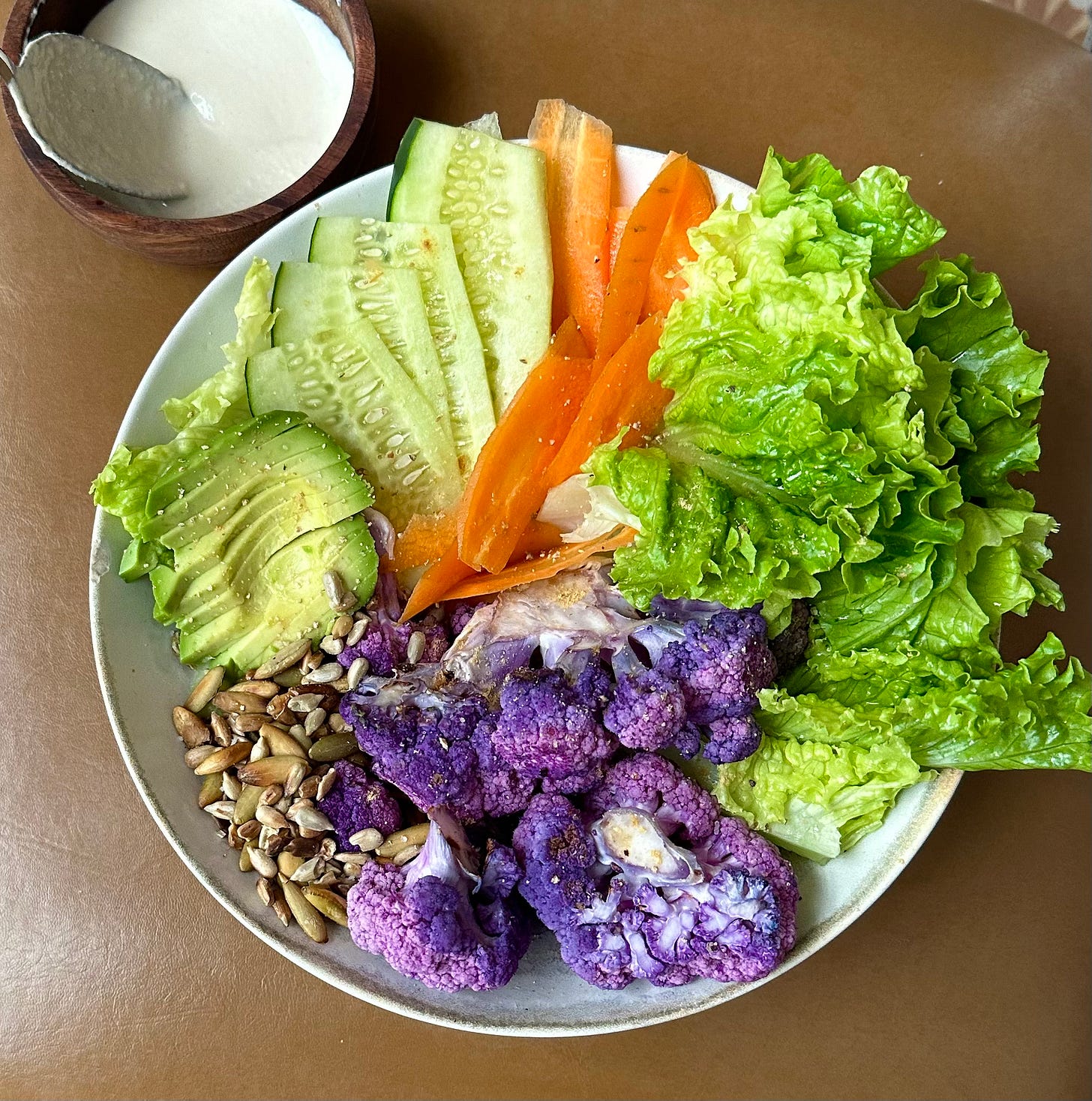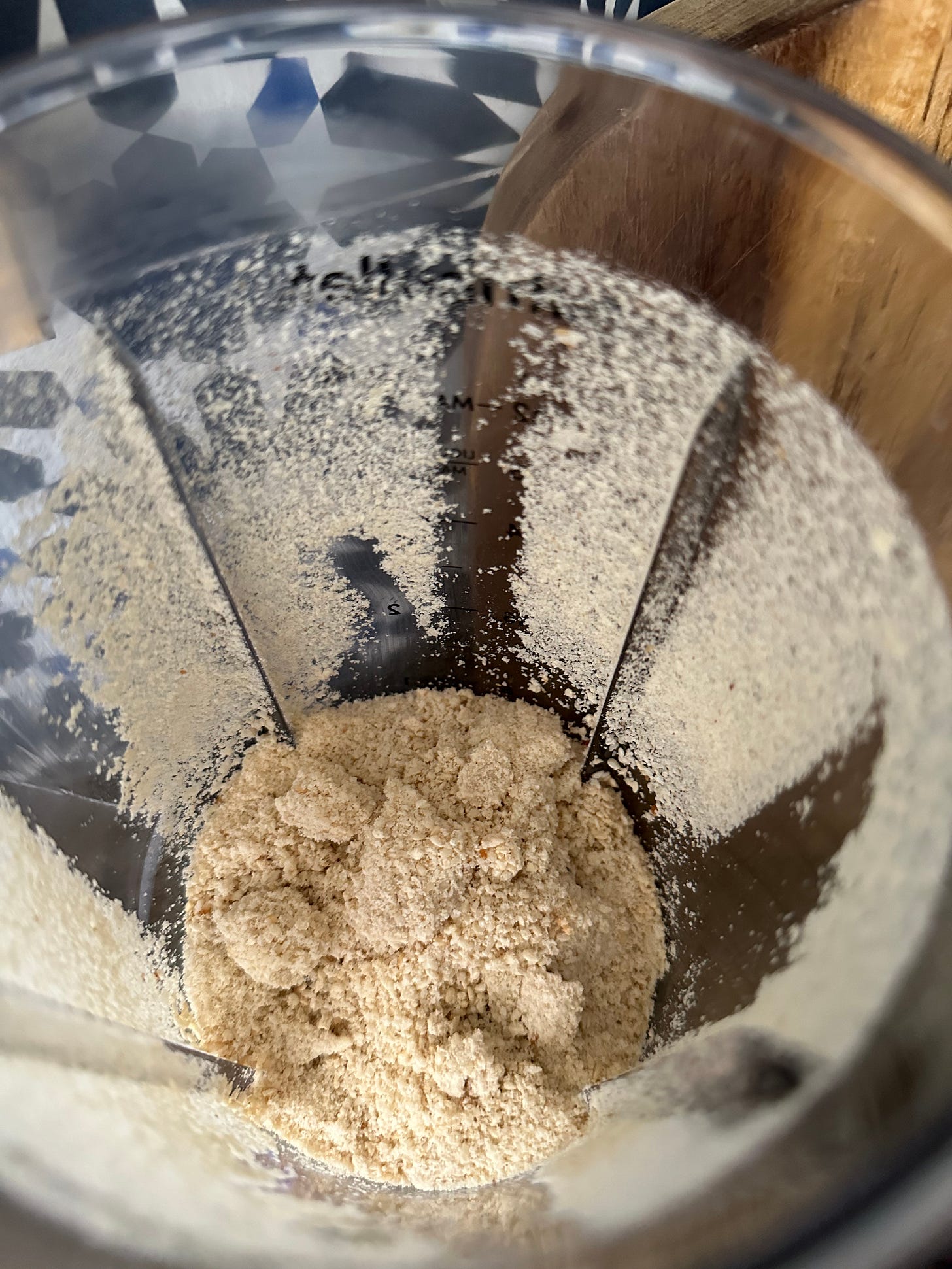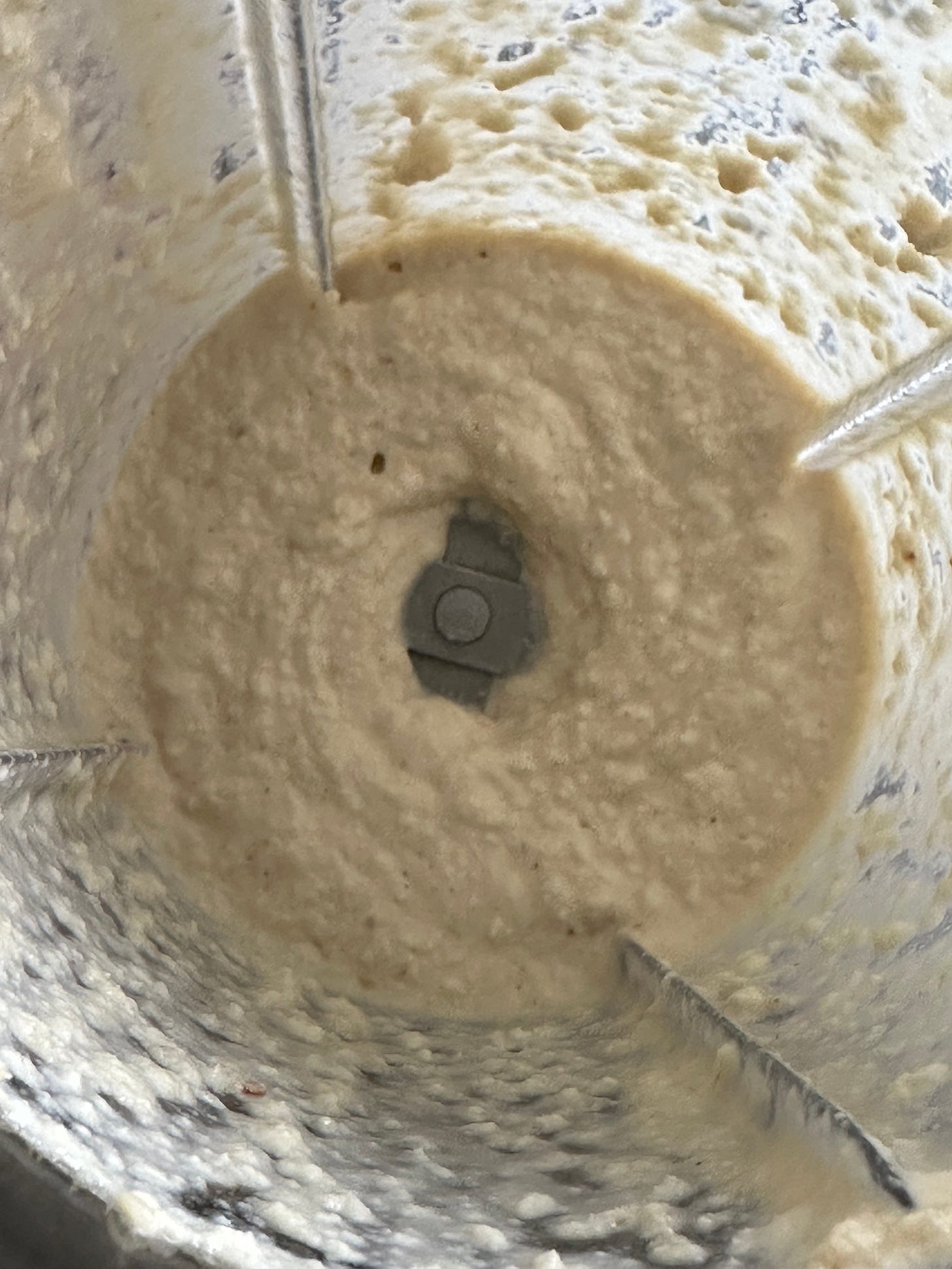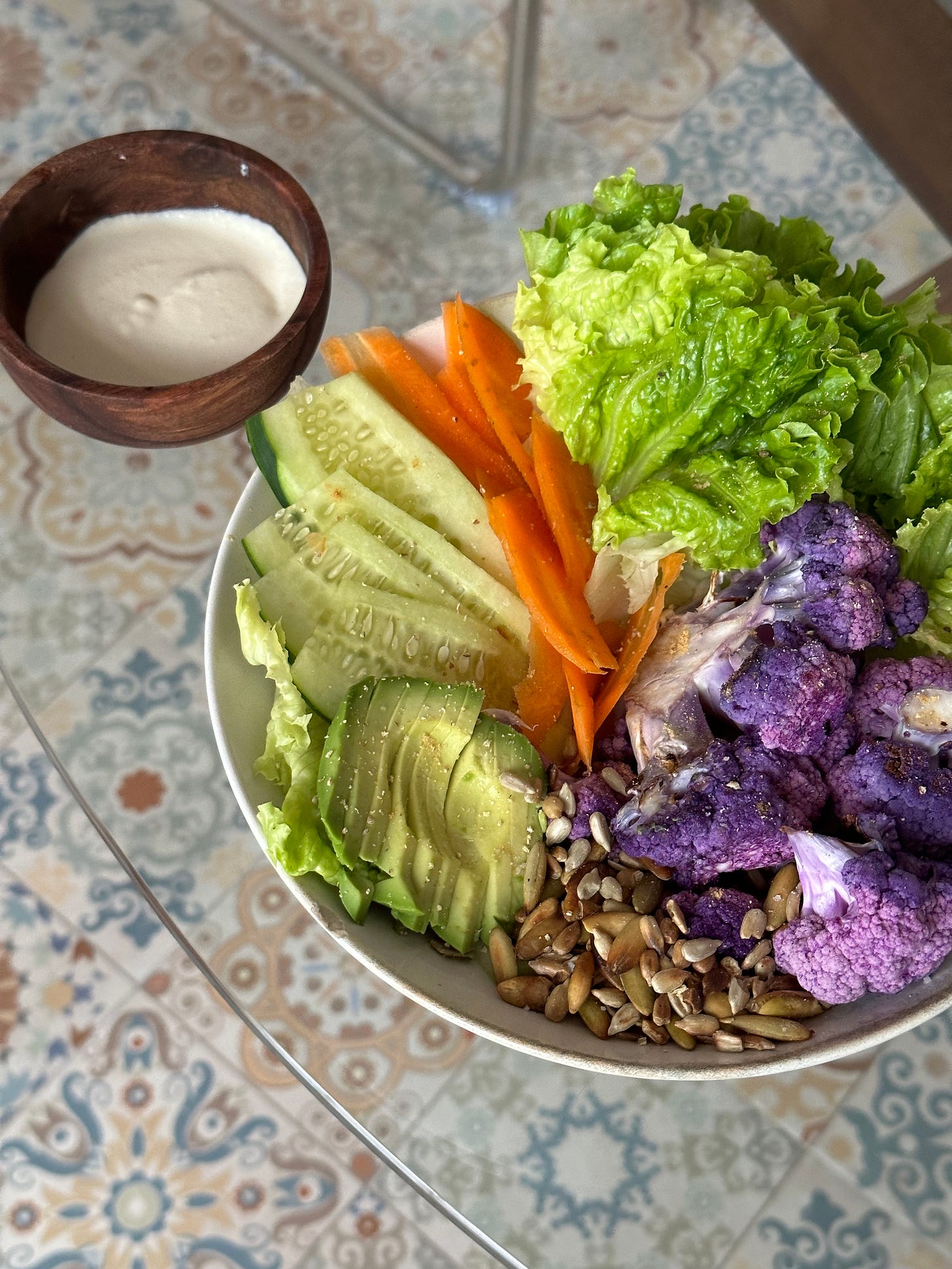The Sex Salad: Harmonizing Hormones with Food (and a Tahini Dressing)
Whether you lay down the pipe or your punani's tight—this salad is crafted to support everyone’s hormonal health.
Balancing hormones isn’t just a wellness girlie fad; it’s a game-changer for a healthier sex life—regardless of what’s in your pants. For women and people with wombs, maintaining optimal levels of estrogen and progesterone is known to enhance libido and sexual satisfaction. For men and people with a penis, balanced testosterone levels are crucial for sustaining sexual desire and performance. A study in The Journal of Clinical Endocrinology & Metabolism found that when hormonal are imbalanced, it has the potential to negatively impact sexual function and desire in all bodies. So if you're aiming for a juicier, sex life this cuffing season, paying attention to your hormonal health is probably worth it.
In this article, I’ll be using the terms “male” and “female”, “men” and “women” to align with how some in the scientific and medical fields have categorized sex in their research articles. I want to note that this isn’t about reducing gender diversity or enforcing a binary view. My goal is to provide clear, relevant information while respecting and acknowledging all sexual expressions.
It’s not just sex—hormone balance is elevating
Sex is cool, but have you ever gone a whole month without PMS-induced mood swings? Hormones are the body's messengers, regulating a range of functions from our moods and metabolism to growth and of course reproductive health. When they're out of sync or unbalanced, it can impact our overall well-being and sometimes our mental health. This imbalance might show up as anything from erectile dysfunction and severe mood swings during gender-affirming hormone therapy (GAHT) to premenstrual depression or hot flashes.
Hormones affect ALL bodies—not just female
My journey into the intersection of cannabis, hormonal health, and nutrition began in 2012 when I had the opportunity to work with Whoopi Goldberg and Maya Elizabeth on their cannabis tincture and edibles brand designed for menstrual relief. Building on this foundation, I co-founded and launched an herbal wellness brand in 2018, designed to address hormonal balance and provide support for all stages of the cycle, drawing on my personal experiences with hormonal changes. The work was demanding but incredibly rewarding and occasionally a lot of fun. Yet, despite my deep commitment and significant contribution to this groundbreaking venture—I was eventually ousted due to reasons protected by a signed non-disparagement clause.
This departure left me disillusioned and hesitant to remain in the cannabis women’s health sector that I had been instrumental in shaping.
During that time of working in those intersection fields, what I found more demoralizing than shady business tactics, was the overwhelming focus on female reproductive health when discussing hormonal balance—as if hormonal imbalances are exclusively a "women’s issue."
Men and people packing are often a hormonal hot mess too. I suspect that the majority of our patriarchal society’s dysfunction is rooted in some poorly managed and unbalanced male hormones. It’s not just about managing the PMS or menopausal symptoms of bitchy women. Our approach to hormonal health has to be more inclusive and comprehensive. Addressing these imbalances helps us—especially healthcare professionals—understand a fundamental aspect of human well-being that impacts everyone and influences how we quite literally give birth to our collective future.
Ok, but why this salad?
Enter the sex salad, a nutrient-dense powerhouse I threw together—specifically with hormones in mind. It’s a crunchy combo of cucumbers, purple cauliflower, fresh lettuce, sesame seeds, avocado, pumpkin seeds, and a luscious tahini dressing scientifically smart for hormonal bodies. Let’s get into why & how:
Cucumbers. They’re refreshing, can be used as a dildo, and give good crunch. With their high water content and phytonutrients: a substance found in plants (like weed), are believed to enhance human health and help prevent various diseases. These compounds include antioxidants and anti-inflammatory agents that are known to contribute to overall well-being and may support disease prevention. But phytonutrients may also play a crucial role in hormone regulation because of hydration, essential for the production and balance of various hormones, including cortisol and insulin.1).
I chose purple cauliflower for its beneficial effects on the endocrine system—a network of glands and organs that produce and release hormones. This vibrant vegetable supports liver detoxification, which is known to be crucial for maintaining balanced hormone levels, particularly estrogen. It’s why doctors often advise individuals with hormonal issues to limit alcohol consumption, as it can impair liver function over time. Some research underscores that sulforaphane—a compound found in cauliflower (broccoli, kale and cabbage too), for its role in modulating estrogen metabolism and potentially reducing the risk of hormone-related cancers.2
Avocados contribute significantly as they provide vitamin E, which supports hormonal balance and reproductive health by acting as an antioxidant. The good fats in avocados are important for the synthesis of hormones, including estrogen and testosterone. Additionally, B vitamins, particularly B6, aid in hormone regulation and mood stabilization, while magnesium helps alleviate symptoms of PMS and menopause. Integrating avocados into your diet can thus support overall hormonal equilibrium and well-being.
I think lettuce deserves its moment. I know salad greens sometimes just seem boring, but their folate-rich, vitamins A and K components make it more valuable in the context of hormones. Salad and leafy greens support overall health and aid in hormone production. Folate, for instance, is crucial for the synthesis of neurotransmitters and hormones, including serotonin and dopamine, which are vital for mood regulation and reproductive health3. Most people trying to conceive or who are pregnant will often take folate for these exact reasons.
Then there are sesame seeds (the base of tahini) an easy way to source B3, a crucial component in turning the food we eat into energy, keeping your skin glowing, aiding digestion, and more importantly, helping produce key hormones. Niacin, found in B3 plays a vital role in producing sex hormones like estrogen, progesterone, and testosterone—along with adrenal hormones such as cortisol and adrenaline. These hormones are essential for everything from your sex drive to handling stress.
When it comes to balancing hormones, zinc is also a key player, and seeds like pumpkin seeds are packed with this essential mineral. Zinc supports testosterone production in male bodies and regulates menstrual cycles and thyroid function in the womb. The Journal of the American College of Nutrition notes that adequate zinc levels help maintain hormonal equilibrium by enhancing immune function. Sunflower seeds (we talked about this and seed cycling in my mango sorbet with sunflower seeds recipe) are an obvious seed to add because of their flavor and function. They aid in estrogen detoxification within the liver, which can be beneficial during the luteal phase when estrogen levels decrease and progesterone levels increase. So I eat them every day during days 16-28—just after ovulation—right before when I start to endure the hormonal fluctuations that contribute to my mood imbalances. Look into seed cycling for more information about that.
All I’m saying is if you incorporate this salad into your regular rotation, you might find that achieving hormonal balance is not just about what you avoid, but about the power of what you choose. If you’re the kind of person who journals or keeps notes on your physical or mental health, take note of what changes, if any, your body undergoes after a month of eating for hormonal balance.
The Recipe —
yields: 2-3 servings
time: Tahini: 25 minutes salad: 5 minutes
What you need:
1 medium head of little gem lettuce (romaine, oak leaf, or butterhead)
1-2 cups purple cauliflower, grilled, or raw and chopped into florets
1-2 large carrots, thinly sliced widthwise or julienned
1-2 large cucumbers, thinly sliced widthwise or julienned
3 tablespoons pumpkin seeds
3 tablespoons sunflower seeds
thinly sliced red or white onion *optional for extra bite
Tahini Paste:
1 cup sesame seeds
2 tablespoons olive oil (or more to process)
Tahini Dressing
1/2 cup tahini paste
2 tablespoons lemon juice
1 tablespoon olive oil
2 garlic cloves, minced
1/2 tsp salt and pepper to taste
Filtered water to thin out (if needed)
What to do:
1. Toast sesame seeds in a dry skillet over medium heat until lightly golden and fragrant, about 5 minutes.
2. Let cool slightly, then blend in a food processor or high-powered blender, adding olive oil until smooth and creamy. Set aside 1/2 of the tahini paste and store the rest in an airtight container in the fridge. (keeps up to 1-3 months as is)
To make tahini dressing, whisk together 1/2 cup of tahini paste and add lemon juice, olive oil, minced garlic, salt, and pepper in a bowl. Gradually add more water until you reach your desired consistency—which should be smooth and pourable. (dressing keeps for up to 14 days)
3. In a large bowl, combine leafy greens, cauliflower, carrots, avocado, cucumber, pumpkin and sunflower seeds. Drizzle generously with tahini dressing and toss to coat evenly.
Other Hormonal Supportive Veggie Add-Ins:
Zucchini (Contains vitamin C and beta-carotene, which reduce oxidative stress and inflammation and may ease symptoms of PCOS for bodies with wombs and supports healthy testosterone levels for males).4
Sweet potatoes (great for hormonal balance due to their high content of vitamins A, C, and B6. Vitamin A supports reproductive health, vitamin C aids in hormone synthesis, and vitamin B6 helps regulate mood and manage PMS symptoms.5
Kale (played out in some circles but still relevant for its vitamin K, an ally for overall hormone balance and overall health.
Broccoli (Contains compounds that help with estrogen metabolism.
Radishes (Manages estrogen levels and reduces hormonal imbalances and supports liver function.6)
Go off. Mix and match these veggies to tailor the salad to your taste, nutritional needs, and accessibility.
Khayarain, M. (2020). "Energizing Effectiveness of Cucumber for Health: A Review Article." Journal of Food and Health Science, 12(2), 45-56. odontoanamaria.com/artigos/pepino4.pdf
Baralić K, Živanović J, Marić Đ, Bozic D, et al. Sulforaphane—A Compound with Potential Health Benefits for Disease Prevention and Treatment: Pharmacological and Toxicological Experimental Studies. (2024) . doi: 10.3390/antiox13020147.
Journal of Nutritional Biochemistry (2019). Folate and Hormone Synthesis.
Zucchini as a functional food: effects on the modulation of oxidative stress." Journal of Food Science, 2018. Journal of Food Science - Zucchini
"Vitamin C: A review of its role in human health" Nutrients, 2017. This review discusses the role of vitamin C in reducing oxidative stress and its impact on hormone synthesis.
"Radishes and health: a review of the beneficial effects of radish consumption." Journal of Nutritional Biochemistry, 2019. This review covers radishes' detoxifying properties and their role in hormonal health. Journal of Nutritional Biochemistry - Radishes













